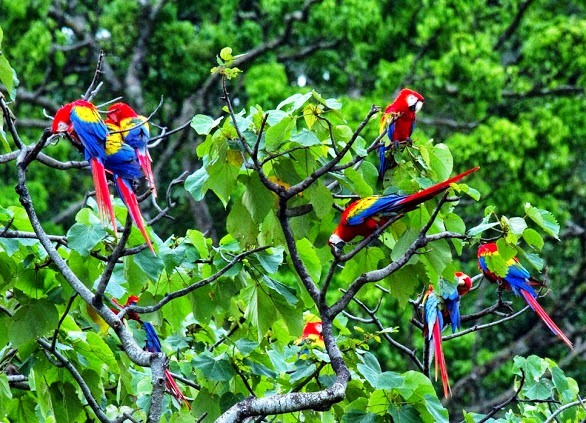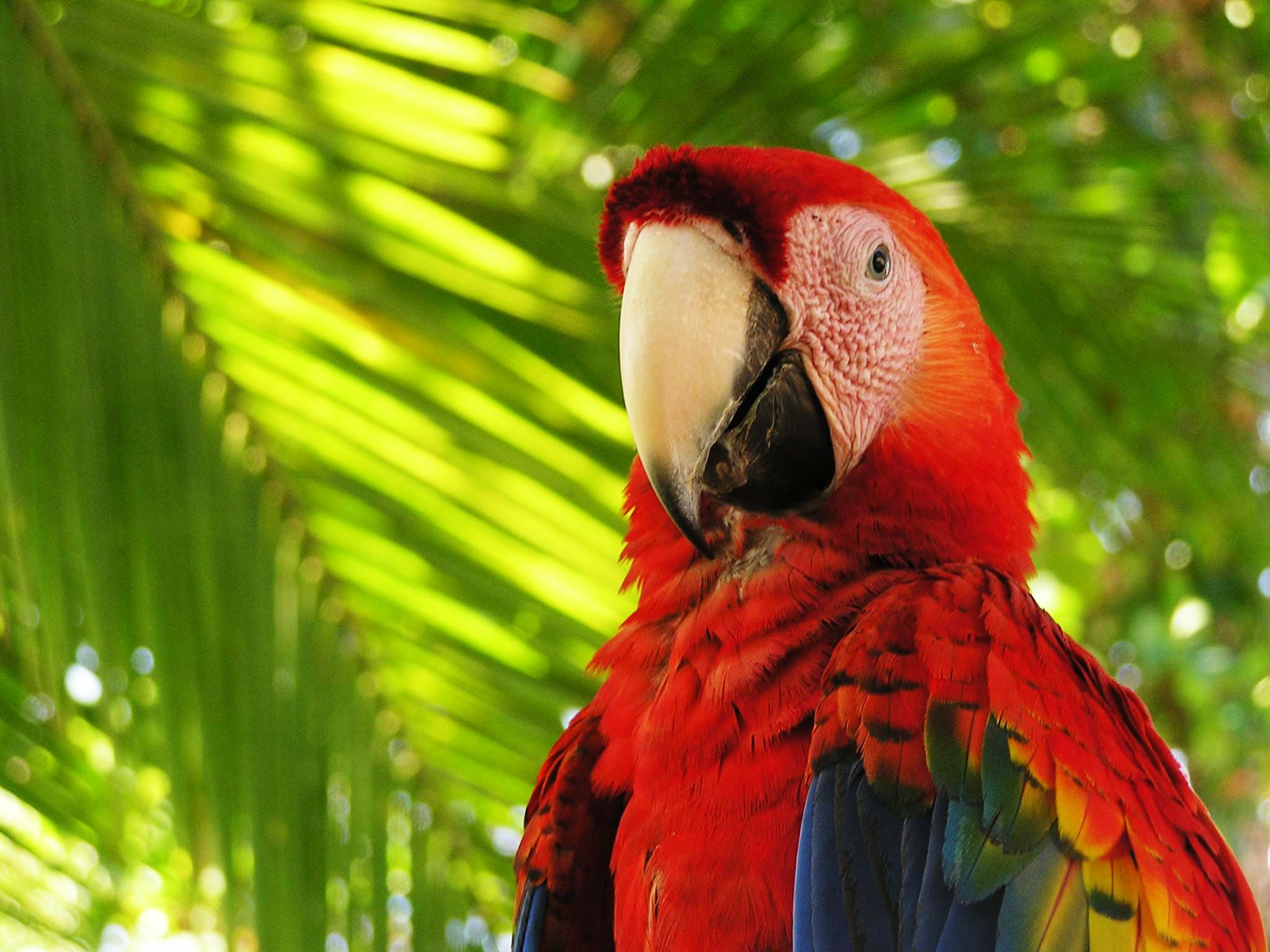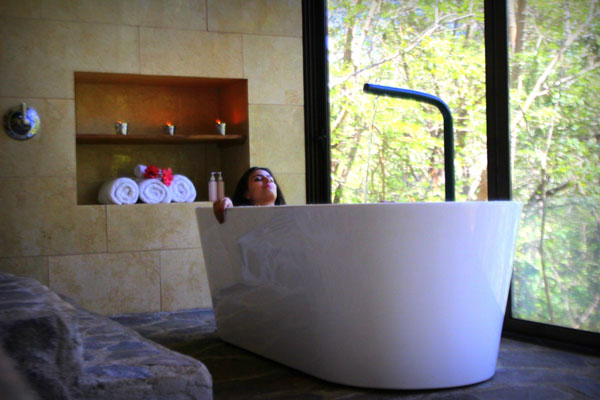 At the very bottom of Costa Rica, the placid blue waters of the Golfo Dulce shine like a mirror most days, reflecting occasional clouds and the immense cerulean sky. Its calm surface is broken by the odd small, local boat cruising along, but the most action is caused by dolphins frolicking or fishing, sea turtles swimming, fish jumping out of the water, and marine birds diving for those fish.
At the very bottom of Costa Rica, the placid blue waters of the Golfo Dulce shine like a mirror most days, reflecting occasional clouds and the immense cerulean sky. Its calm surface is broken by the odd small, local boat cruising along, but the most action is caused by dolphins frolicking or fishing, sea turtles swimming, fish jumping out of the water, and marine birds diving for those fish.
This time of year, the Gulf gets even busier with visiting migrating Humpback Whales. The “inner sea” of Golfo Dulce, known as a tropical fjord, on Costa Rica’s southern Pacific Coast by the Osa Peninsula is a critical habitat for Humpback Whales and is key to the species’ survival, according to the Center of Cetacean Investigation of Costa Rica (CEIC). Whales arrive to reproduce and give birth in the warm waters of Costa Rica’s South Pacific Coast, from the Ballena National Marine Park just south of Dominical down to the Golfo Dulce.
 The annual migration of Pacific Humpback Whales is one of the most remarkable journeys by any creature on the planet. The cetaceans travel between 3,000 and 5,000 miles each way, from both the Northern and Southern Hemispheres, making them one of the farthest-migrating animals on Earth. Northern Hemisphere Humpbacks travel from Alaska and British Columbia to Mexico, Hawaii and Central America, for the months of December to March. Southern, Antarctic-based Humpback Whales spend their winter months near Australia and as far north as Costa Rica from June to November. They are most likely to be seen in Costa Rica between August and October.
The annual migration of Pacific Humpback Whales is one of the most remarkable journeys by any creature on the planet. The cetaceans travel between 3,000 and 5,000 miles each way, from both the Northern and Southern Hemispheres, making them one of the farthest-migrating animals on Earth. Northern Hemisphere Humpbacks travel from Alaska and British Columbia to Mexico, Hawaii and Central America, for the months of December to March. Southern, Antarctic-based Humpback Whales spend their winter months near Australia and as far north as Costa Rica from June to November. They are most likely to be seen in Costa Rica between August and October.
 The southern whales are more abundant in Golfo Dulce, according to research by the CEIC. Females swim into the shallow waters of the Gulf’s interior to birth their young and breastfeed them. Males concentrate in the outer area of the Gulf waiting to breed with available females.
The southern whales are more abundant in Golfo Dulce, according to research by the CEIC. Females swim into the shallow waters of the Gulf’s interior to birth their young and breastfeed them. Males concentrate in the outer area of the Gulf waiting to breed with available females.
“A large part of the Gulf is used by Humpbacks to rest, give birth to their young, and nurse them for a week until they are able to get out to the Pacific to continue with their migration,” notes research by the CEIC.
The CEIC and other environmental organizations, including Earthwatch, are lobbying for the creation of a Marine Protected Area within Golfo Dulce to safeguard the whales’ reproductive and feeding grounds, and to establish buffer areas surrounding these critical habitats.
“(There is an) urgent need to create connectivity between different marine protected areas to maximize the effectiveness in the protection of species and resources,” note CEIC researchers.
 Humpback whales are an endangered species with international government-protected status. They are easy to spot since they live at the ocean’s surface, both in the open ocean and in shallow coastline waters. They swim slowly and are known as the “acrobats of the sea” for their aerial antics, which makes them perfect stars for whale-watching tours. Humpbacks also are known for their “songs” – long, varied, complex and beautiful sequences of squeaks, grunts, and other sounds. Only males have been recorded singing and they seem to produce the complex songs only in warm waters – thought by scientists, therefore, to be mating calls. Listen to recorded Humpback Whales singing off the coast of Maui at www.whalesong.net.
Humpback whales are an endangered species with international government-protected status. They are easy to spot since they live at the ocean’s surface, both in the open ocean and in shallow coastline waters. They swim slowly and are known as the “acrobats of the sea” for their aerial antics, which makes them perfect stars for whale-watching tours. Humpbacks also are known for their “songs” – long, varied, complex and beautiful sequences of squeaks, grunts, and other sounds. Only males have been recorded singing and they seem to produce the complex songs only in warm waters – thought by scientists, therefore, to be mating calls. Listen to recorded Humpback Whales singing off the coast of Maui at www.whalesong.net.
Golfo Dulce also is home to important resident and migratory communities of Bottlenose Dolphins, Spotted Dolphins, Spinner Dolphins, and the occasionally seen False Killer Whales.
Visit Golfo Dulce
 Stay right on the inner Golfo Dulce at Playa Nicuesa Rainforest Lodge, and see these gentle giants in person. The award-winning eco-lodge offers boat tours of the Gulf to see marine life such as dolphins, sea turtles and whales.
Stay right on the inner Golfo Dulce at Playa Nicuesa Rainforest Lodge, and see these gentle giants in person. The award-winning eco-lodge offers boat tours of the Gulf to see marine life such as dolphins, sea turtles and whales.
Playa Nicuesa Rainforest Lodge is located on a 165-acre private preserve bordering the Piedras Blancas National Park. A TripAdvisor Certificate of Excellence winner, the sustainable lodge is a unique adventure travel destination for its remote, pristine wilderness location.
By Shannon Farley















